Last Updated: 26/08/2025
How to Read Dog Body Language
Learn your dog's body language to ensure safety and strengthen your bond.
Author: Dr Josepha Cox BBiomedSc (Hons) DVM
Reading Time: 2 minutes - short read
As much as we wish they could, our dogs can't talk but they do in fact tell us a whole lot about how they're feeling using body language and verbal cues.
Understanding how to read your dog's body language will not only lead to a stronger bond between you but it's also paramount for safety. Many unwanted, and sometimes even tragic events such as being hurt, bitten or scratched may have been prevented if attention was paid to how the dog was feeling before the event took place. Often dogs will give multiple warning signs before reacting to a situation so it's useful for us to be able to interpret those signs and our pooches will be grateful for it!
When looking at your dog's body language it's helpful to look at more than one aspect of your pet. For example, rather than just looking at their wagging tail and interpreting this as happy, attention also needs to be paid to their body position and facial expression. Also note these body language tips are only a guide and some dogs may not show all of these signs in a given situation.
Relaxed and Happy Dogs
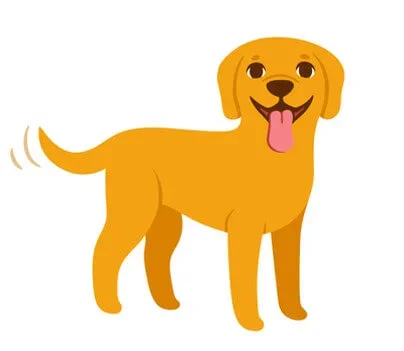
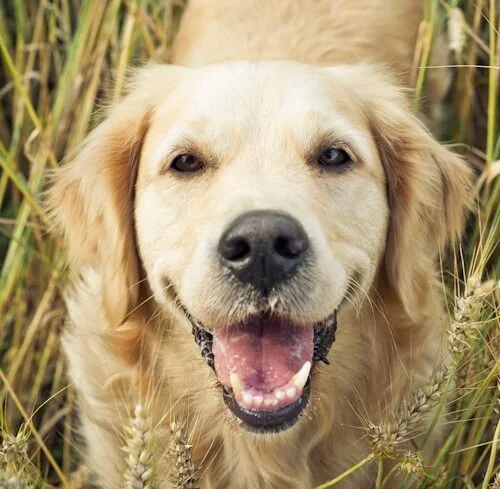
Relaxed dogs have a generally soft and loose body posture, they hold no tension and appear at ease. Their mouths are often open and they sometimes even appear to be smiling!
Ear position varies, especially based on breed but generally they are in a neutral or forward position. The tail can be relaxed, gently wagging or wagging enthusiastically.
They may be laying down where they may have a curved posture or if extremely relaxed they may even be on their backs with their belly showing. The eyes are soft and bright or may be blinking slowly.
Happy and relaxed dogs often enjoy being petted. They don't recoil when being touched, there's no tension in their body and sometimes they'll even nudge you to keep the pats coming!
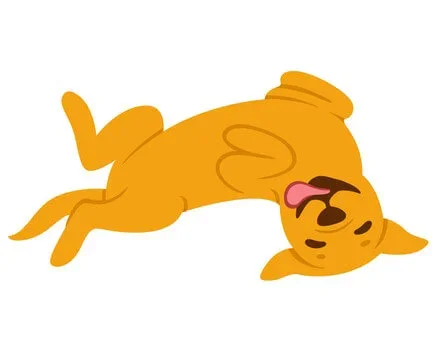
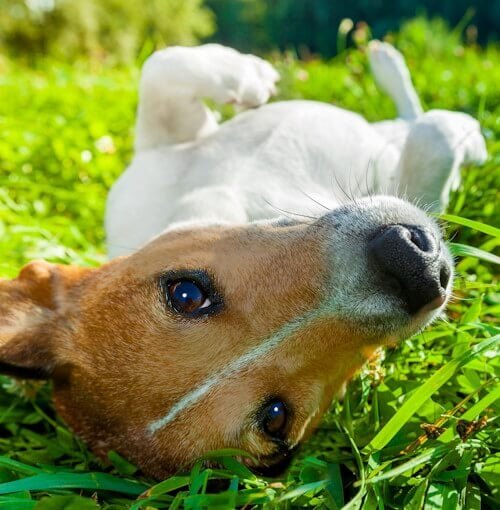
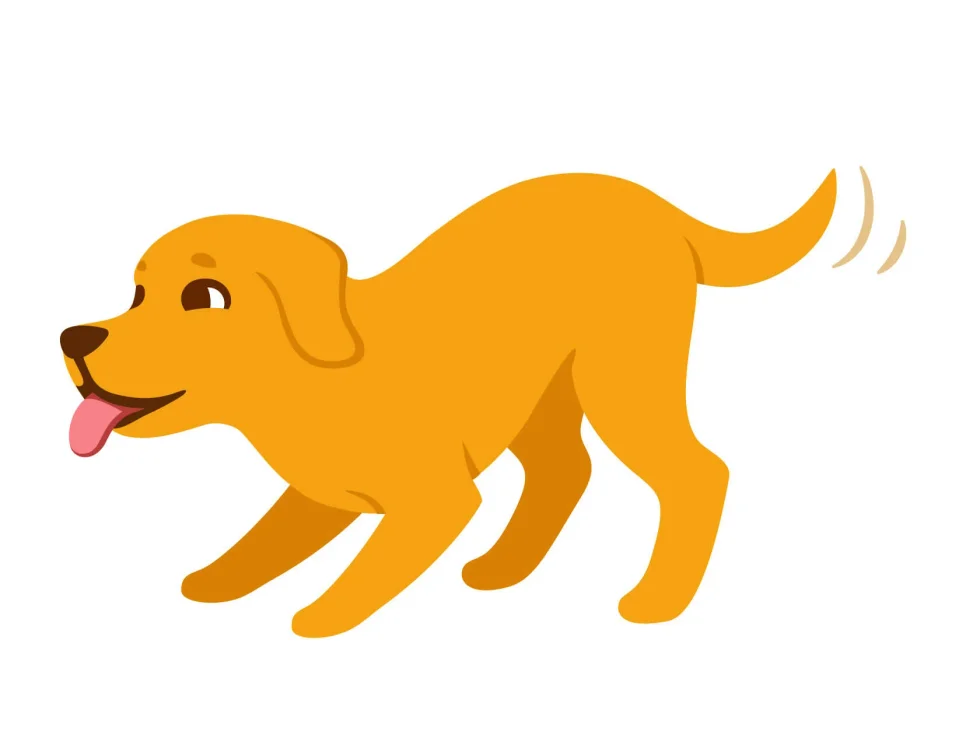
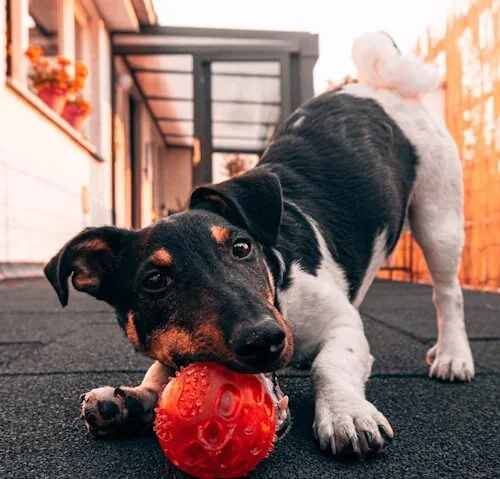
Relaxed dogs have a generally soft and loose body posture, they hold no tension and appear at ease. Their mouths are often open and they sometimes even appear to be smiling!
Ear position varies, especially based on breed but generally they are in a neutral or forward position. The tail can be relaxed, gently wagging or wagging enthusiastically.
Anxious or Stressed Dogs
When your dog is stressed there are four main responses you might see, they are referred to as the four F's: Fight, Flight, Fidget or Freeze.
Fight: The dog may show aggression to help eliminate the threat
Flight: The dog may try to hide or escape the situation
Fidget: The dog may show displacement behaviours such as lip licking and yawning
Freeze: dog may be so frightened they remain perfectly still
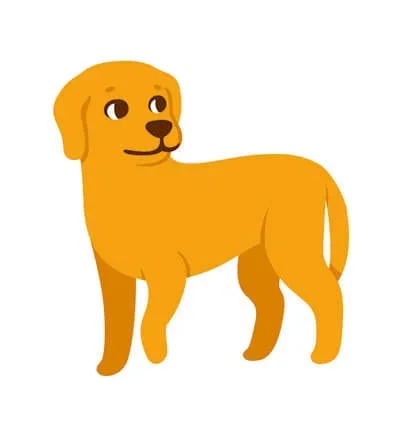
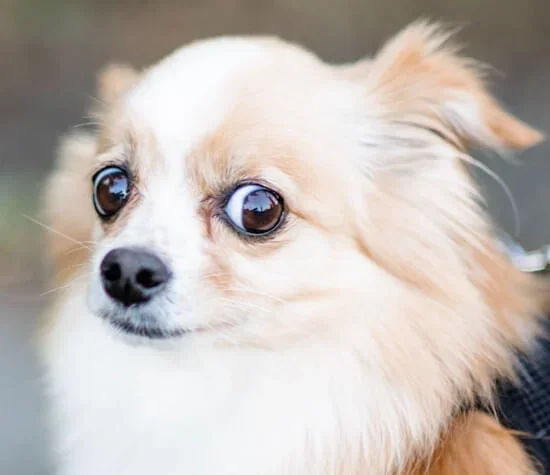
It's important to note that while every dog has the potential for aggression and some show it more willingly than others, aggression is frequently used as a last resort when their warning signs have gone unnoticed or they have not been removed or been able to remove themselves from a stressful situation. So picking up when your dog is anxious or stressed is probably one of the more important skills to have as it can really help to avoid dangerous situations.
Dogs who are anxious appear very tense. Their ears are usually pulled back close to their head, the facial muscles are rigid and the head may be lowered or turned away so as to not look directly at the perceived threat. You may also note the dog giving a "whale eye". This is when the eyes are fixed on a person or object but the whites of the eyes (sclera) are exposed.
They may be standing rigid, with their tail between their legs and they may have one paw lifted. More often than not they will try to reduce their size by crouching or even laying down on their backs. As mentioned earlier, very relaxed dogs can also roll onto their backs but the key difference here is that there likely won't be any tail wags and the body/facial expressions will appear tense rather than soft. Some anxious dogs may even urinate while on their backs.
Displacement behaviours are also common when your dog is anxious or stressed. These are behaviours that are normal but out of context. Common displacement behaviours include itching, yawning, lip licking, sniffing or shaking off as if they were wet. These behaviours are displayed when your pooch has conflicting emotions and is attempting to diffuse stress or uncertainty. Dogs that are highly stressed can pant, pace and tremble.
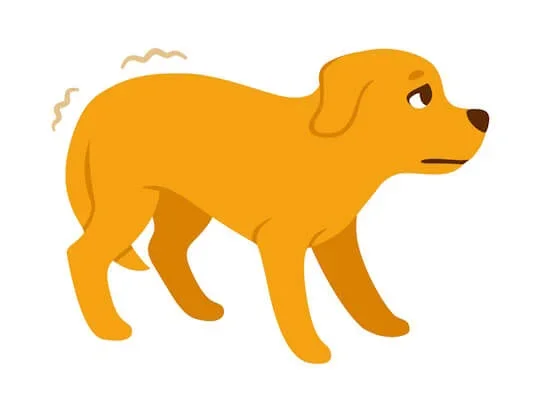
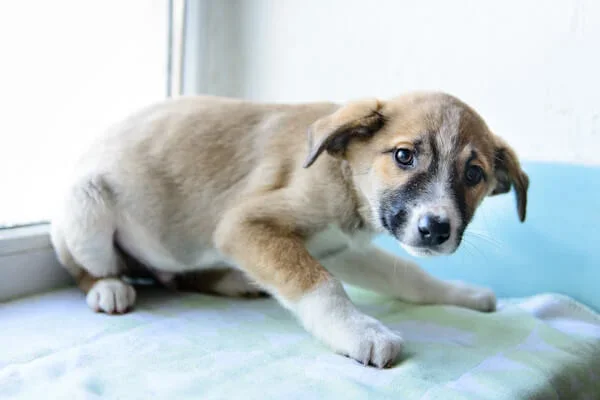
After reading these guidelines you may have noticed your pet is displaying signs of fear or anxiety. We have a handy article on How to calm an anxious pet which is full of helpful tips and advice. We also stock a large range of calming aids and supplements.
Top Recommended Products For Anxious Dogs
For further information reach out to our vet squad or your local veterinarian who can examine your pooch and discuss the use of prescription anti-anxiety medication if required.
Aggressive or Defensive Dogs
Aggression in dogs is complex. It can be shown when your dog is fearful, in pain or unwell, when resource guarding or being territorial. Whatever the underlying cause it's crucial to be able to identify when a dog is showing signs of aggression as aggressive dogs can be a danger to themselves and others.
As highlighted earlier, aggression is often preceded by signs of stress or anxiety so these early warning signs are crucial to prevent or predict the possible escalation to aggression.
Aggressive or defensive dogs are very tense. They may be standing tall and stiff with a rigid, high tail that may be slightly wagging or their weight may be shifted back as if ready to lunge. The hair on their neck and back (hackles) may be raised. Their pupils can be wide (dilated) and their stare fixated. They may be snarling (showing their teeth), growling or barking. The ears can be either erect and listening carefully or pulled back.
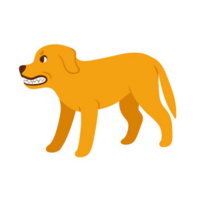
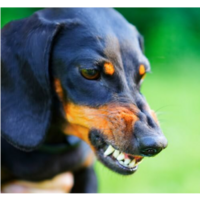
Showing aggression is a dog's way of asking for space. If the dog can't escape the perceived threat or situation they will act by lunging, snapping and biting.
While some forms of aggression such as territorial aggression may be considered part of the range of normal dog behaviours (sometimes it's even encouraged in the case of guard dogs), it goes without saying aggression can be a dangerous situation. If you think your dog may have issues with aggression it's important to receive professional help. You can seek help from a veterinary behaviourist who has extensive additional education in animal behaviour. You can view a list of veterinarians with further qualifications in behaviour here.
Golden rules to preventing unwanted behaviour or injury
Always supervise children and pets!
Ensure pets are undisturbed when they are:
- Eating or chewing
- Sleeping
- Resting on their bed or kennel
- Toileting
- Unwell or injured
Discourage people, especially children from:
- Teasing pets
- Rough play
- Hurting or handling them inappropriately ie pulling tail, squeezing
- Handling pets around the neck
- Straddling or "riding" pets
References
Landsberg G 2016, The four F's of stress in pets, DVM360, accessed 6 June 2023, https://www.dvm360.com/view/four-fs-stress-pets
Lowry S 2022, How to speak dog by understanding canine body language, Outward hound, accessed 6 june 2023, https://outwardhound.com/furtropolis/pet-parenting/how-to-read-dog-body-language
RSPCA UK 2023, Understanding dog behaviour, accessed 6 June 2023, https://www.rspca.org.uk/adviceandwelfare/pets/dogs/behaviour/understanding
Victorian Government, Department of Economic Development, Jobs, Transport and Resources 2015, We are family - Responsible pet ownership education program, Victoria.
Further Reading
Want to read more? Check out our other articles:
History
Our experts continually monitor the health and wellness space and we update our articles when new information becomes available.
Fri Mar 21 2025
Edited by Dr Teagan Lever BVSc (Hons)Dr Josepha Cox BBiomedSc (Hons) DVM
Author, BBiomedSc (Hons) DVM
Dr Josepha graduated from the University of Melbourne in 2015 and has spent her time in small animal practice in Melbourne. She has a special interest in diagnostic imaging, nutrition and geriatric medicine. She is currently completing further study in animal nutrition and her favourite part of being a vet is helping senior animals to live happily and comfortably into their twilight years.

